Zhujiajiao Water Town (朱家角水镇, 朱家角古镇, Zhujiajiao Ancient Town) is a charming water town located in the Qingpu District of Shanghai, China. It is known for its picturesque scenery, ancient architecture, and traditional culture. Zhujiajiao is often referred to as the “Venice of Shanghai” because of its intricate network of canals, bridges, and narrow streets.
The town dates back more than 1,700 years and was an important trading hub during the Ming and Qing dynasties. Visitors can explore historical landmarks such as the Kezhi Garden, which features classic Chinese architecture and beautiful landscaped gardens, as well as the Zhujiajiao Ancient Street, lined with shops selling traditional crafts, snacks, and souvenirs.
One of the town’s main attractions is the boat ride along the canals, which provides a unique perspective on the town’s architecture and daily life. Other popular activities include trying local delicacies like sesame cakes and rice wine, and watching performances of traditional Chinese music and dance.
Table of Contents
- Basic Information
- Location and Transportation
- History of Zhujiajiao Water Town
- Highlights of Zhujiajiao Water Town
- Map and Recommended Route
- Vlog about Zhujiajiao Water Town
- Popular Restaurants in Zhujiajiao Water Town
- Photography Spots and Tips
- Useful Tips Summarized from Reviews
- Other Ancient Towns in Shanghai
Basic Information
| Estimated Length of Tour | Over 3 hours |
| Opening Hours | 24 hours a day |
| Ticket Price | The town itself is free, but you have to pay to visit various attractions. The combination ticket costs from 40 to 80 RMB, depending on the number of attractions it covers. |
| Telephone Number | 0086-021-59240077 |
Location and Transportation
Zhujiajiao is located in the Qingpu District of Shanghai, China, about 48 kilometers (30 miles) west of downtown Shanghai. The town is situated on the banks of the Dianpu River, which flows through the center of the town and connects to a network of canals that crisscross the area. To get there, you can choose the following ways:
Subway: Take subway line 17, get off at Zhujiajiao Station (朱家角), and walk about 200 meters to the north to reach the town.
Bus: There is no direct bus leading to Zhujiajiao from the City Center of Shanghai. So I highly recommend you choose the subway.
History of Zhujiajiao Water Town
Zhujiajiao is a town with a rich history that dates back over 1,700 years. According to historical records, the town was first established during the Three Kingdoms period (220-280 AD) and became an important trading hub during the Ming (1368-1644) and Qing (1644-1912) dynasties.
During this time, Zhujiajiao was a major center for agriculture, handicrafts, and silk production. The town was known for its intricate network of canals, which were used to transport goods and materials. The canals also served as a defense mechanism against invading armies.
The town’s name, “Zhujiajiao,” means “Zhu Family Village” in Chinese, and refers to the prominent Zhu family who was wealthy landowners in the area. The family played an important role in the development of the town, and many of their ancestral halls and gardens can still be seen today.
Zhujiajiao also played a role in the development of Chinese literature and culture. The town was home to several famous scholars and poets, and was a popular setting for literature and poetry during the Ming and Qing dynasties.
Highlights of Zhujiajiao Water Town
Ancient Bridges
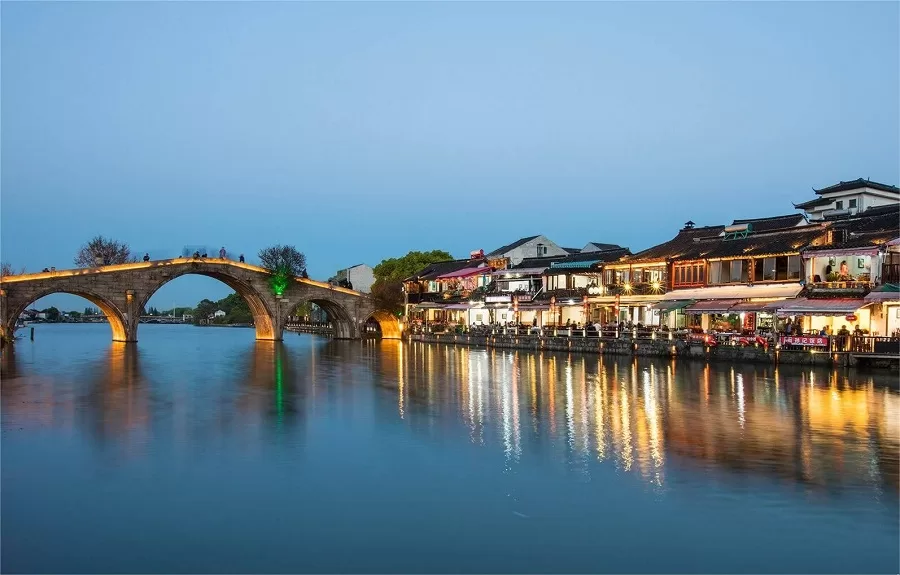
Zhujiajiao is known for its many ancient bridges, which were built during the Ming and Qing dynasties. These bridges are an important part of the town’s cultural heritage and are considered masterpieces of ancient Chinese architecture.
The most famous bridge in Zhujiajiao is the Fangsheng Bridge, also known as the “Setting-Fish-Free Bridge,” which was built during the Qing dynasty and is a popular spot for taking photos. Other notable bridges in the town include the Lang Bridge, the Zhaohe Bridge, and the Chenghuang Bridge, each with their own unique style and design.
Boat Ride
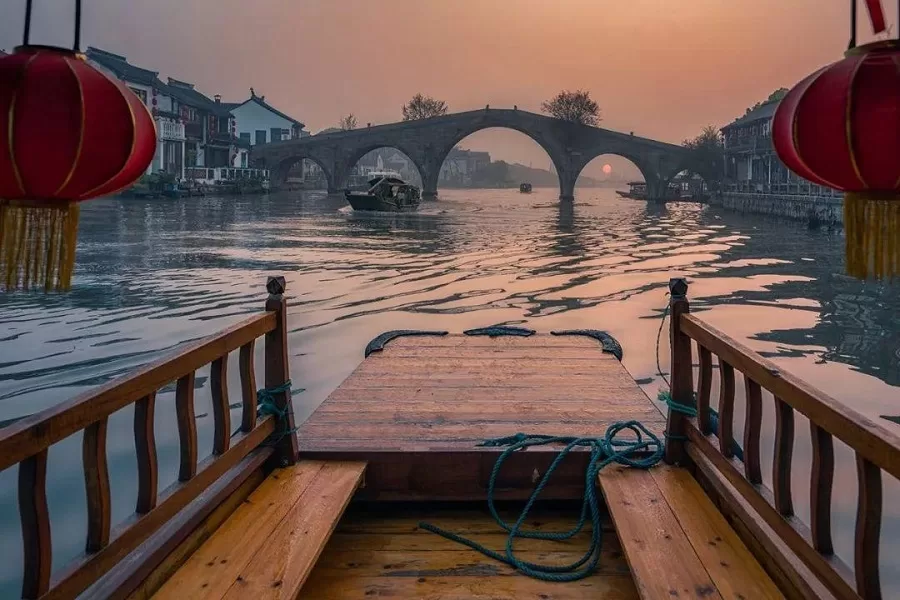
A boat ride along the canals of Zhujiajiao is one of the most popular attractions in this charming water town. Visitors can hire a boat and take a leisurely ride through the narrow canals, passing under ancient stone bridges and admiring the traditional houses along the banks.
The boat ride offers a unique perspective on the town’s architecture, allowing visitors to see the intricate details and designs of the buildings from a different angle. It is also a peaceful and relaxing way to escape the hustle and bustle of the town and appreciate the tranquility of the waterways.
Kezhi Garden and Zhuxi Garden
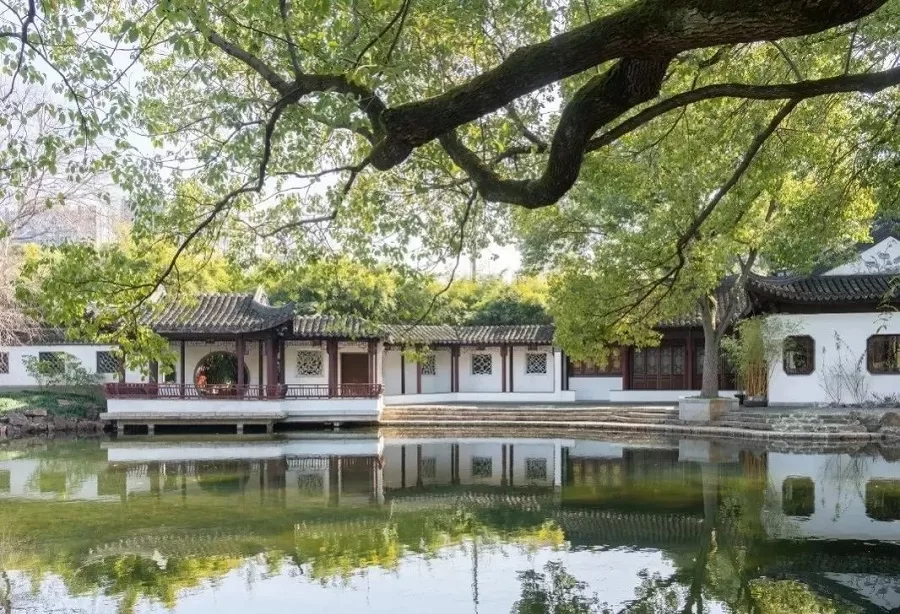
Kezhi Garden and Zhuxi Garden offer a delightful juxtaposition of historical grandeur and modern charm. Kezhi Garden, an expansive manor-style garden, spans 96 acres and was built in 1912 by Ma Wenqing. Its name, meaning “to study and cultivate,” reflects its dual purpose as a place for both scholarly pursuits and agricultural activities. The garden features a study hall, known as the Book City, and a village area named Daoxiang Village. Within its bounds are over 200 buildings, including pavilions, corridors, bridges, halls, and residences. The layout is meticulously designed, with a harmonious balance of dense and open spaces, making it a rare gem among private gardens.
In contrast, Zhuxi Garden, constructed in 1956, is a more compact and contemporary space, covering over 70 acres. Despite its smaller size, Zhuxi Garden is intricately designed and visually appealing. It is divided into three distinct sections representing spring, autumn, and winter, each with its unique charm. The garden also includes a children’s playground, a restaurant, a tea house, and various shops, making it an ideal destination for relaxation, dining, shopping, and entertainment.
Zhujiajiao Ancient Street
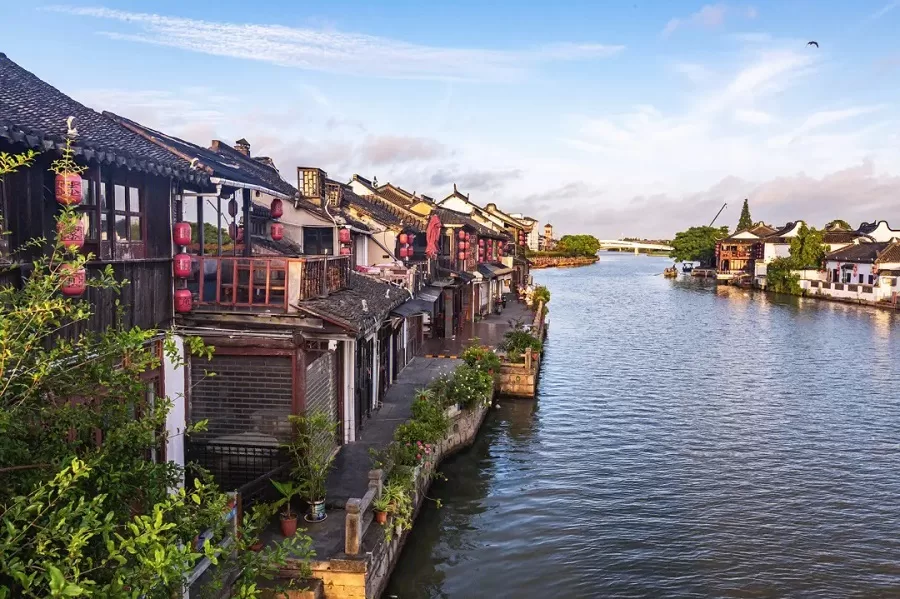
Zhujiajiao Ancient Street is a bustling marketplace located in the heart of Zhujiajiao. It is a vibrant and colorful street filled with traditional architecture, local crafts, and delicious food.
Visitors can wander through the narrow alleyways and browse through the many shops selling traditional Chinese souvenirs, snacks, and handicrafts. The street is also home to many restaurants and food stalls serving local delicacies such as sesame cakes, sweet-scented osmanthus cakes, and rice wine.
Map and Recommended Route
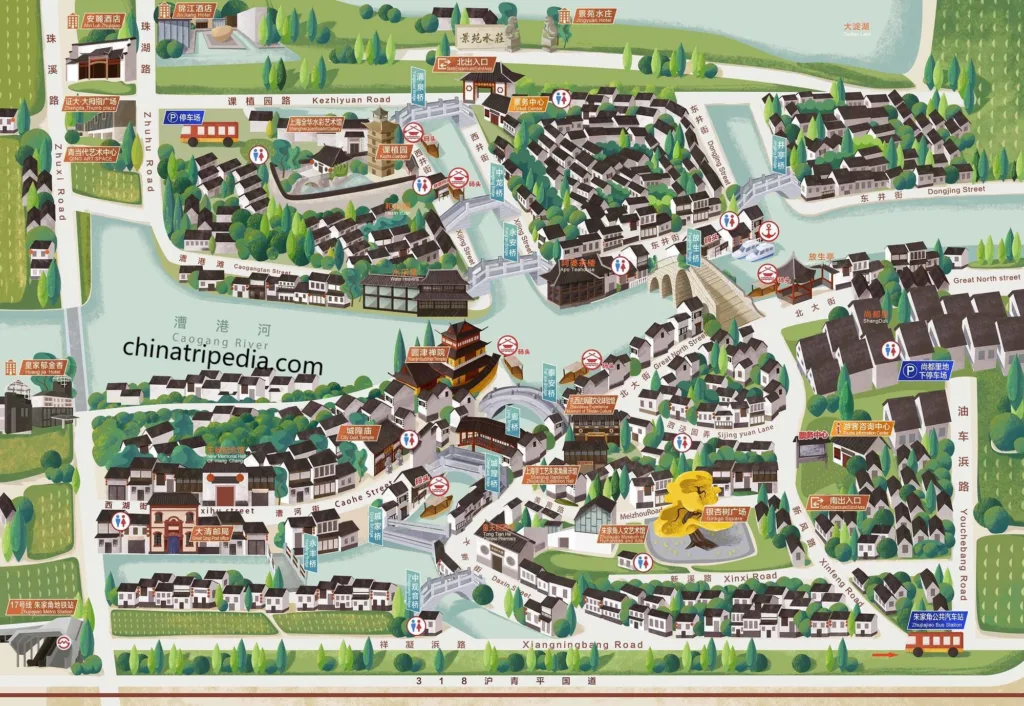
Boat Route:
Kezhi Garden → Board a boat at Kezhi Garden Pier → Beida Street Pier → Tai’an Bridge → Yuanjin Zen Temple → Chenghuang Temple → Caohua Street → Daqing Post Office → Beida Street → Shanghai Handicrafts Zhujiajiao Exhibition Hall → Shanghai Helong Art Museum → Fangsheng Bridge → Hexin Garden → Quanhua Watercolor Art Museum
Walking Route:
Kezhi Garden → Hexin Garden → Fangsheng Bridge → Xinfeng Road → Meizhou Road → Chenghuang Temple Bridge → Caohua Street → Daqing Post Office → Chenghuang Temple → Yuanjin Zen Temple → Tai’an Bridge → Beida Street → Shanghai Handicrafts Zhujiajiao Exhibition Hall → Shanghai Helong Art Museum → Fangsheng Bridge → Xijie Street → Yongquan Bridge → Quanhua Watercolor Art Museum
Best Time to Visit: It is recommended to visit Zhujiajiao Water Town either in the morning or the afternoon to avoid the peak heat of midday, making your visit more comfortable and enjoyable.
Vlog about Zhujiajiao Water Town
Popular Restaurants in Zhujiajiao Water Town
Xiaolin Grandma’s Meat Rice Dumplings (小林阿婆肉粽)
Famous for its savory salted egg yolk meat dumplings. Each dumpling is packed with generous chunks of lean meat and a rich salted egg yolk. The glutinous rice is flavorful and well-seasoned. They also offer braised pork, though it hasn’t been tried.
Address: No. 264, Beida Street, Zhujiajiao Town
Defa Noodle House (德发面馆)
Known for its eel noodles, which feature tender, springy eel meat in a rich, savory sauce that coats the noodles perfectly. The fresh shrimp noodles are also worth trying.
Address: No. 2, 209 Beida Street, Zhujiajiao Town
Wu Zifang Stinky Tofu (吴字坊臭豆腐)
This stinky tofu is not as pungent as expected. It’s crispy on the outside and tender on the inside, with a soft texture similar to tofu pudding. The sauce is mildly sweet. The oil cakes here are average and a bit pricey.
Address: No. 16, Xijie Street
Jiang Yimin Dim Sum Shop (江一民点心店)
Offers delicious fresh meat and bamboo shoot shumai. The dumplings are thin-skinned, juicy, and flavorful. Their pan-fried dumplings are also highly recommended.
Address: No. 124, Xinxie Road (outside the ancient town)
Jiaoli Zhu Grandma’s Snack Bar (角里朱阿婆小吃馆)
Known for its hawthorn cakes, which feature a chewy outer layer and a filling of sugar and red beans. The cakes are soft, sweet, and not overly sugary, making them a great choice for pastry lovers.
Address: No. 127, Dongjing Street, Zhujiajiao Town
In addition to these popular spots, Zhujiajiao is home to various local specialties such as pickled vegetables (like pickled radish and carrots), Zhujiajiao soy sauce shrimp, and Zhujiajiao stir-fried conchs. You can explore these unique dishes at local restaurants throughout the town.
Photography Spots and Tips
Dongjing Street
- Dongjing Street: Turn right under the Fangseng Bridge onto Dongjing Street. This alley is less crowded and offers a quieter atmosphere for photos.
- Wuyun Chantea House (No. 20 Dongjing Street): The courtyard is decorated with lush green plants, making it a perfect backdrop for photography.
- Old House Grocery Store (No. 27-28 Dongjing Street): This store features a cute Japanese-style decor that adds a charming touch to your photos.
Xijie Street
- Yongan Bridge: Capture the picturesque scenery of the crooked tree and the stone benches by the river. The green trees lining both sides of the street provide a soothing background.
- Yongfeng Bridge: The walls covered with climbing ivy on one side of the bridge offer interesting textures and angles for photography.
Catholic Church
- Catholic Church (No. 27, Lane 317, Caohua Street): The Gothic Revival architectural style combined with traditional Chinese elements creates a dramatic and timeless feel in your photos.
- Red Mailbox (No. 320 Caohua Street): The red mailbox contrasts beautifully with the nearby rose-covered wall, offering a pastoral and colorful backdrop.
Donghu Street
- No. 258 and No. 219: These locations feature a beautiful rose waterfall, perfect for capturing vibrant and romantic floral images.
Useful Tips Summarized from Reviews
Explore the Commercial Area: There is a bustling commercial area near the Fangsheng Bridge (放生桥). Here, you’ll find a wide variety of shops and stalls offering food, drinks, souvenirs, and other local specialties.
Visit Dadian Lake: After exploring Zhujiajiao, take some time to stroll around nearby Dadian Lake. The scenic views and recreational activities such as camping and water sports make it a popular destination for visitors seeking outdoor enjoyment.
Choose Window Seats for Dining: If you’re dining in Zhujiajiao Water Town, opt for a seat on the second floor by the window. This way, you can enjoy your meal while admiring the picturesque views outside, adding to the overall dining experience.
Try Famous Teahouses: Don’t miss the opportunity to visit renowned teahouses like Jiangnan First Teahouse (江南第一茶楼), featuring Pingtan performances every Saturday afternoon, and Apo Teahouse (阿婆茶楼), offering Pingtan performances daily from 14:00 to 16:00. These teahouses provide an authentic cultural experience along with delicious teas and snacks.
Consider Boat Tours: While in Zhujiajiao, you may opt for a boat tour to explore the town’s waterways. Prices typically start at around 200 yuan for a boat that accommodates up to six people. Although the boat ride may not be very long, it offers a unique perspective of the town from the water.
Evening Exploration: If you’re staying until the evening, be aware that many shops close early, often before 8:00 PM. As the night falls, the town becomes quieter, creating a serene atmosphere. The illuminated temples and buildings provide a mesmerizing sight.

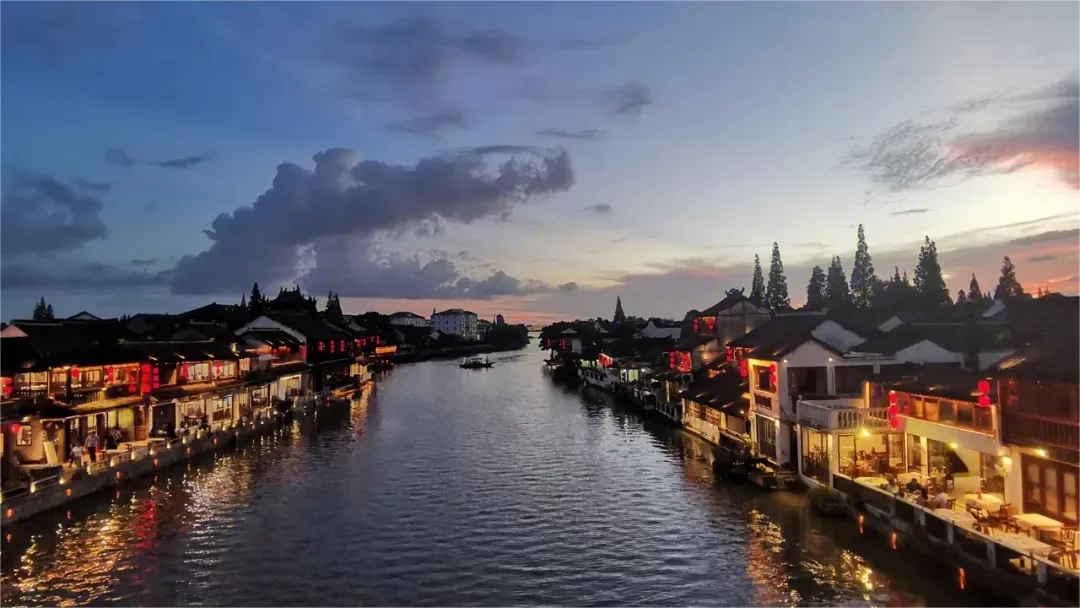




I can’t remember how many times I’ve been to Zhujiajiao, but this is my first visit in the evening. Without the hustle and bustle of daytime tourists, walking in this ancient town, with the gentle breeze on my face, I can truly appreciate the beauty of early summer.
On a sunny day, Zhujiajiao Ancient Town looks like it has its own filter! There is no entrance fee, and the prices are quite friendly.
Although it is a tourist attraction, the local atmosphere in Zhujiajiao Ancient Town is still very vibrant. The Ming and Qing era architecture that has been preserved for hundreds of years adds to its charm, and the “Release Bridge” (放生桥) on the old street is especially unique. The best part is that the scenery changes at different times of the day!
I didn’t find it as commercialized as people say online. After all, an ancient town is just about appreciating the architecture – are we really supposed to go to a residential area without any shops? I see the commercialization more as convenience; there are quite a few food options available. There weren’t too many tourists, and the Inner Mongolia milk tea that netizens recommended is indeed very good.
ZhuJiaJiao Ancient Town is best visited in the early morning. Around seven o’clock, when the sun has just risen, the town is still shrouded in mist, and there are no tourists on the streets yet. Only a few locals can be found in the Chenghuang Temple offering prayers.